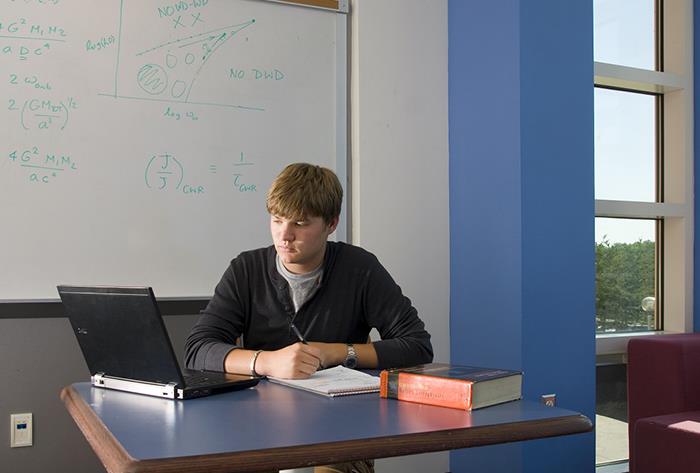Learning Spaces Evaluated for Effectiveness
The Learning Technologies Team recently completed its portion of the Learning Space Rating System, a tool for rating formal learning spaces to determine how well their design affords and encourages active learning.
Twenty-four items of analysis were applied to each of the more than 180 formal learning spaces and classrooms on Truman’s campus.
Many of the tests involved classroom-specific measurements. One assessment compared classroom size to the amount of students the learning space could accommodate. Similarly, one measured the area of student workspaces and desks, while another weighed classroom population against available power outlets. Other items dealt specifically with a room’s environment. A speech intelligibility test was done to check the effectiveness of vocal communication in the space, while decibel readings were performed to find the classrooms that may have issues with excessive ambient noise.
Once all of the data was collected, it was compared to the LSRS standard. While each item had a specific and objective qualification to be met, the Learning Technologies Team used a scale of 0-3 to more granularly report on each data point, with a “3” signifying a qualification as fully satisfied and then moving down the scale to a zero where qualifications were not met at all.
As the project enters its next phase, the Learning Technologies Team will be passing the torch to other specialized teams to check other aspects of the rooms, such as temperature control, scheduling procedures and potential for faculty development.
The goal with the massive undertaking was to provide good, usable and objective data about the physical features and conditions of Truman classrooms to help inform decision making and funding processes related to classroom use, maintenance, updates and renovations.
For more information on the national LSRS project, visit educause.edu/library/resources/7-things-you-should-know-about-learning-space-rating-system.

